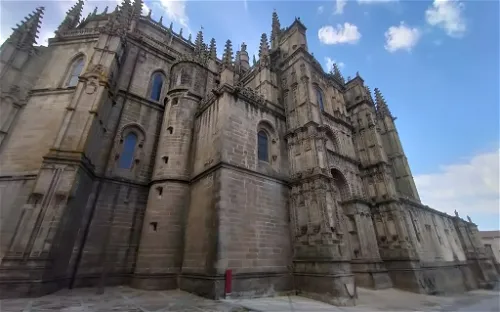Cathedral of Plasencia and its collection
The Cathedral of Plasencia is a complex structure consisting of two or three parts. The "Old Cathedral" was built in the 13th and 14th centuries and is now used as a museum. The "New Cathedral" was begun in the late 15th century. Additionally, there is a medieval cloister (claustro) with an adjoining chapter house (sala capitular). All parts of the cathedral are made of precisely hewn sandstones, showcasing the architectural prowess of the time.
The Old Cathedral and Cloister
The Old Cathedral, which is now used as a museum, is a significant part of the Cathedral of Plasencia. It consists of the three-aisled, basilica-like nave of the original church. The late Romanesque cloister, another part of the cathedral, still has several capitals adorned with biblical scenes and/or with vegetal or abstract-geometric forms. Some parts of the cathedral were later renewed, adding to the architectural diversity of the structure.
Furnishings of the Cathedral
The Cathedral of Plasencia is not only remarkable for its architectural structure but also for its furnishings. These include the main altar by Gregorio Fernández, created in the early 17th century, and the tomb of Bishop Pedro Ponce de León, which dates back to around 1575. Additionally, the cathedral houses choir stalls from the late 16th century and an organ from around 1580. These elements contribute to the historical and artistic value of the cathedral.
History & Anthropology Archaeology Historic house Religion Religious building
#3 History & Anthropology in Plasencia #3 Historic houses in Plasencia #10 History & Anthropology in Extremadura #4 Archaeology museums in Extremadura #8 Historic houses in Extremadura #5 Religion museums in Extremadura #2 Religious buildings in Extremadura #152 Religion museums in Spain #94 Religious buildings in Spain

